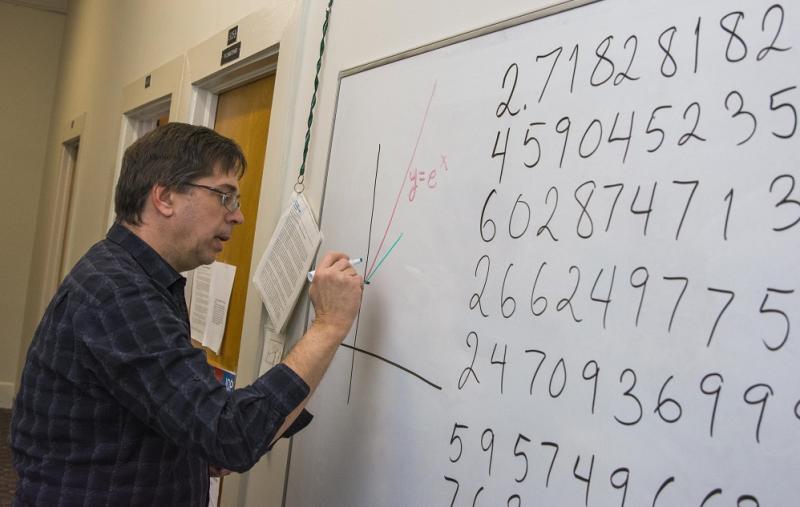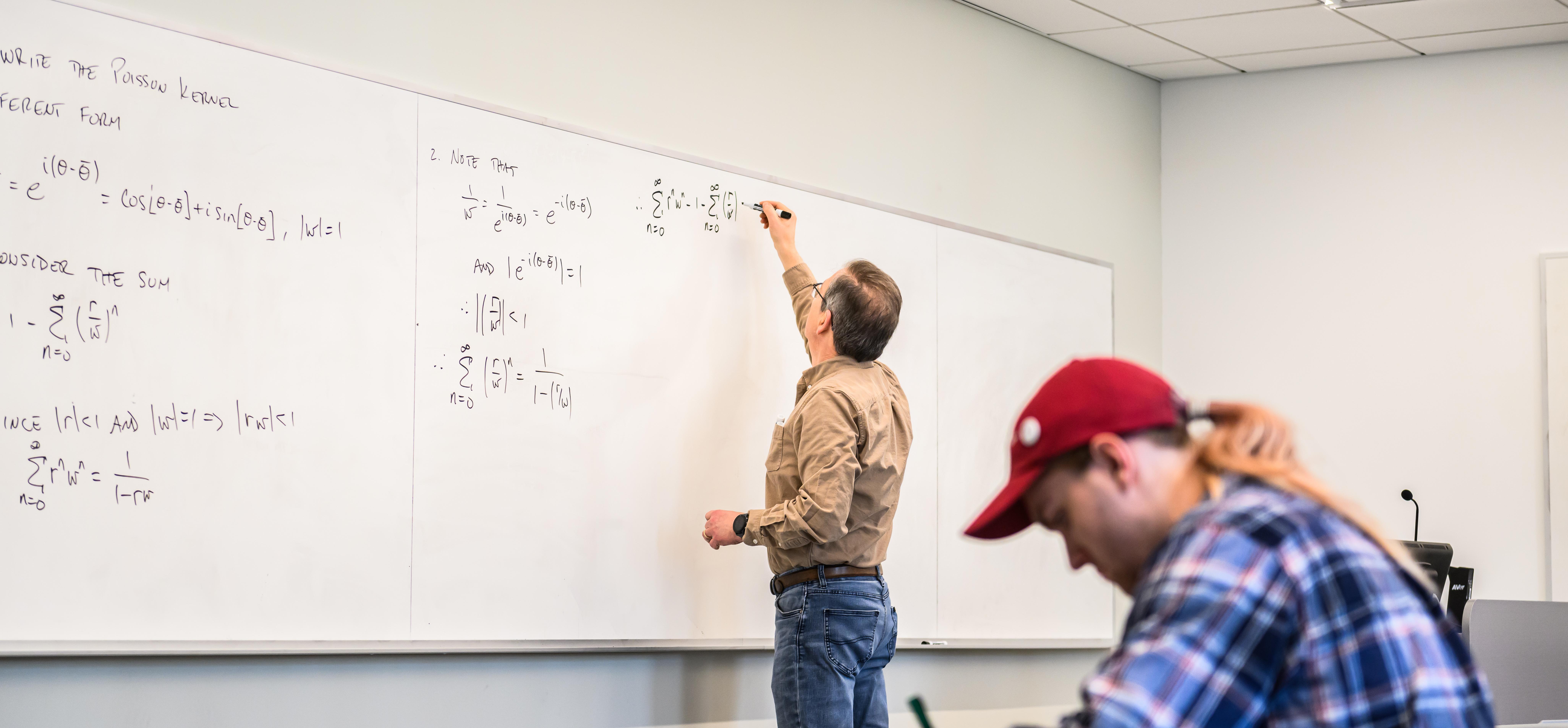In the American notation for dates, February 7 is 2/7/18. That’s cool, because a fundamental mathematical constant, sometimes called “Euler’s number”—named for 18th Century Swiss mathematician Leonhard Euler—is e = 2.718. Well, not exactly: e goes on forever without repeating itself. We call that irrational. The beginning of the song sounds something like this:
e = 2.71828182845904523536028747135266249775724709369995957496696762772 …
In fact, the number e is transcendental! To get it exactly, one might add up

…but that would take forever!

Bill Martin using e to chart how the stock market has
performed over a 50-year span.
Before we get to the mystery of e, why do we associate dates with math anyway? Well, because it’s fun. It gives us a way to celebrate our nerdy side without getting in too deep. Each year we celebrate “Pi Day” (March 14) because, for any perfect circle the circumference divided by the diameter is 3.14159265358979323846264338327950288419716939937510 . . . or thereabout.
Others celebrate “Tau Day” 6/28, “Fibonacci Day” 11/23, “Mole Day” 10/23 (at 6:02 a.m., of course), and so on. Pythagorean Triple Days come much less frequently: the most recent one was 8/15/17 and the next will be 12/16/20.
Then there are once-in-a-lifetime dates, like the most recent “Odd Day” 11/29/1999. But many coincidences are a lot less rare than we might think. Friday the Thirteenth had better not be unlucky: it happens to us almost twice a year. (Why? If the 13th of the month were to land on a day of the week uniformly at random, then one in seven of them would be Fridays.) Our brains are wired to see patterns in numbers and the calendar and the clock offer numbers to us every day. We can’t resist.

